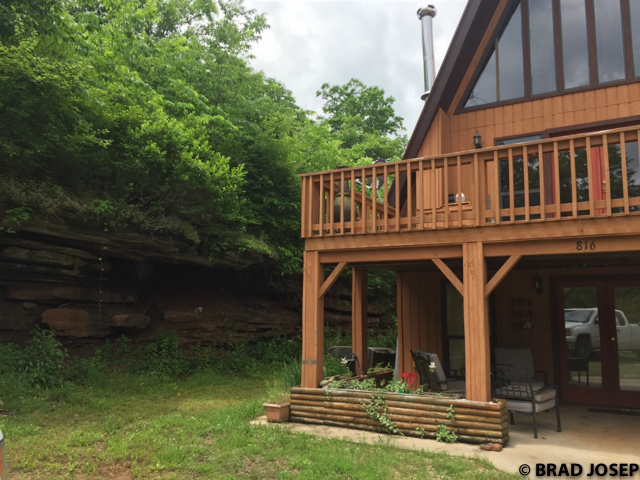
Before….
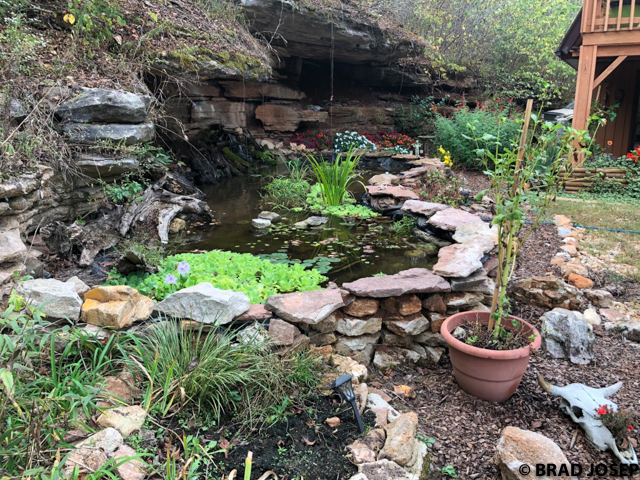
After!!! With hard work, research, and 2 years of time a shady, very unproductive side yard has become a beautiful mecca for insects, reptiles, amphibians and birds. As seasons pass, and vegetation becomes increasingly established, more and more critters make this habitat home.
It is 28 degrees outside right now, so I guess the long, hot Indian Summer is finally over in the Ozarks. This feels like a good time to say goodbye to all of the cool creatures that provided me with so much enjoyment, and encourage everyone to enhance the habitat of property. Check out a post a did a while back on how we built a frog pond and then look below to see the progression of a very special piece of backyard wildlife habitat.
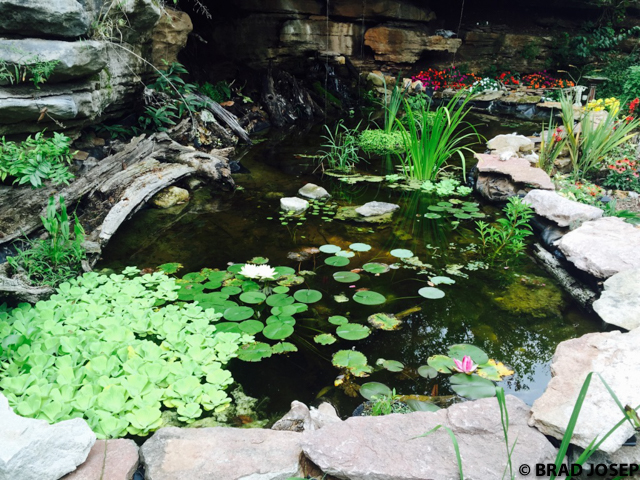
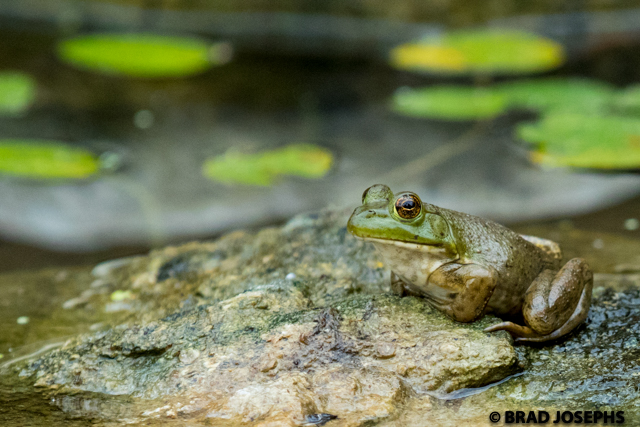
There are probably 8 resident bullfrogs in the pond, as well as green and leopard frogs. We saw and heard a total of 7 species this summer.
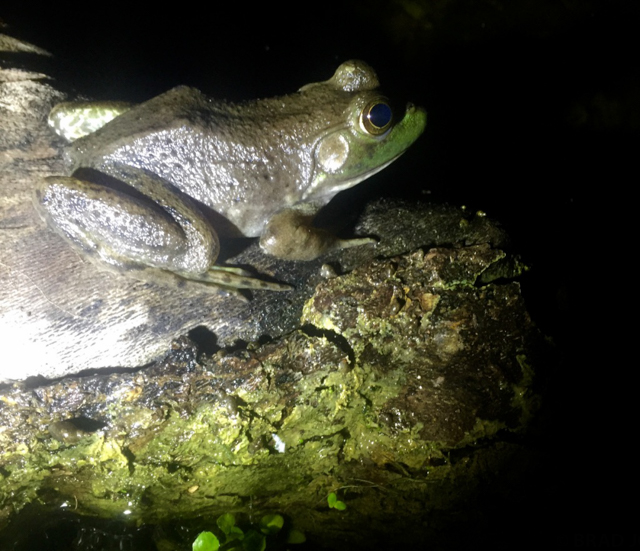
The frogs are very active at night, and can be approached closely with a light for photography.
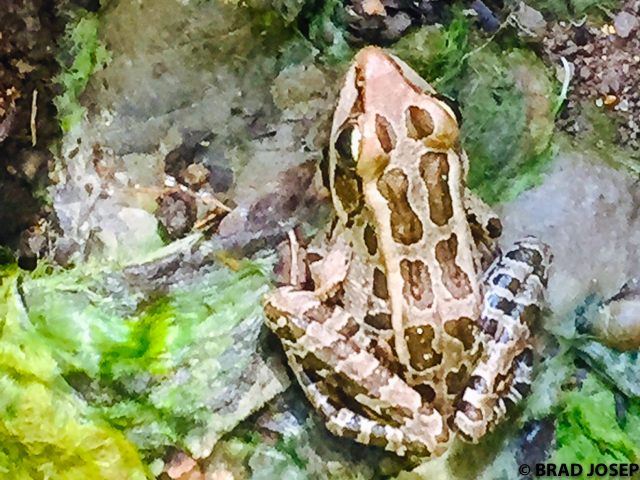
One of the new species this summer that I heard and found was this tiny, beautifully marked pickerel frog.
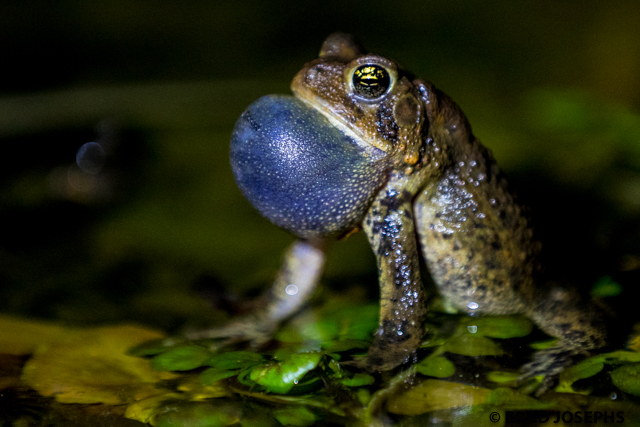
In June the pond was invaded by many dwarf american toads who used the pond as a mating ground.
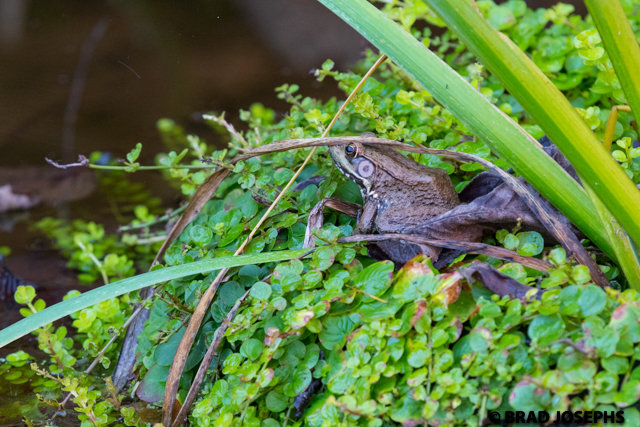
Frogs love to sit inside floating pots that house aquatic plants which grow in constantly wet soil.
The frogs are the focus of the pond, so we are very careful to make sure we don’t put anything in the water which may harm amphibians. Slime or insect control agents are all toxic to amphibians, even though they are listed was safe for fish. During the hot summer months algae can dominate a pond, which will rob the water of sufficient dissolved oxygen which is needed for developing tadpoles. A pond needs to have 70% of the pond covered in underwater plants, and 70% of the surface covered in floating plants like lilies and lotus. Aquatic plants compete with algae for nutrients and sunlight, and provide oxygen to the water. We also do not use toxic mulch (treated), or cedar mulch mulch which can be toxic to amphibians. We never ever use insecticides or herbicides (like roundup!) as the skin of amphibians is extremely porous. We did not put fish in the pond, as they will eat frog eggs.
In addition to frogs, a pond will attract other creatures such as snakes, turtles, lizards, insects and birds- especially during hot dry periods. We have seen several snakes, and a baby snapping turtle showed up this spring! We will relocate the turtle when it gets larger next year because a large snapping turtle may try to dig into the bottom and tear our pond liner.
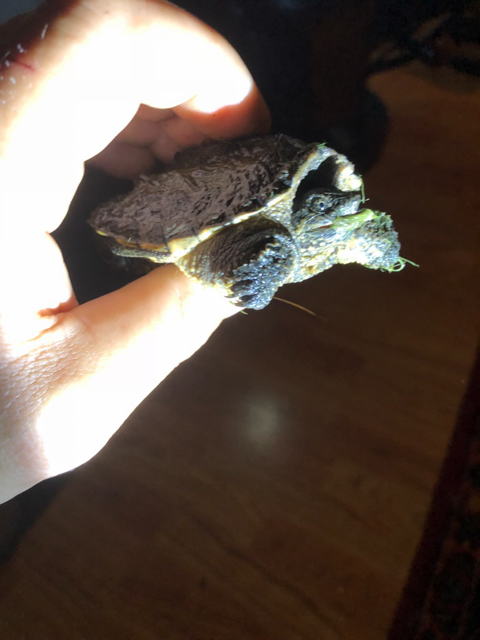
Early this summer we found a baby snapping turtle! I have no idea how it got there, but it stayed all summer and grew. I am sure it will overwinter in the sediment and we will see it next year.
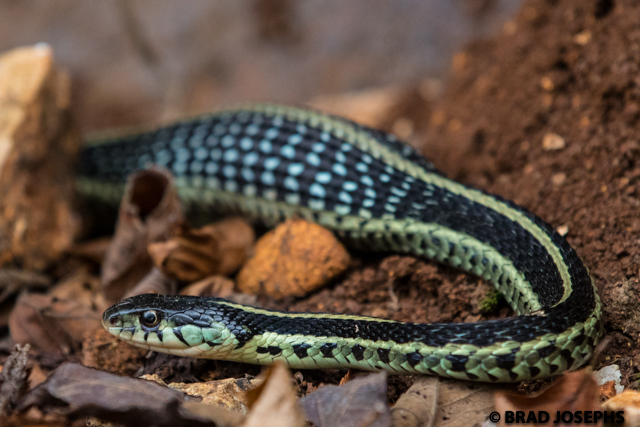
A garter snake found something to eat in the rocks near the pond.
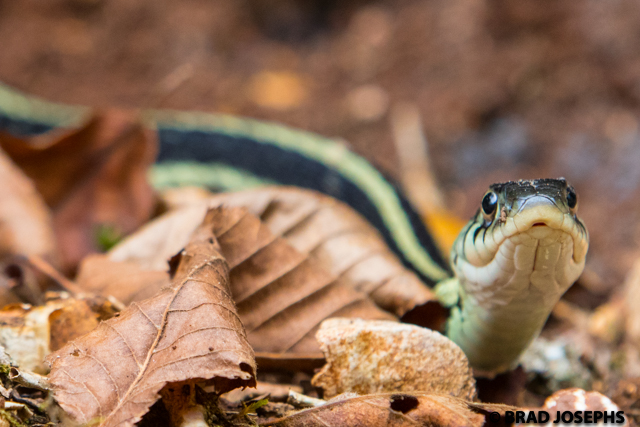
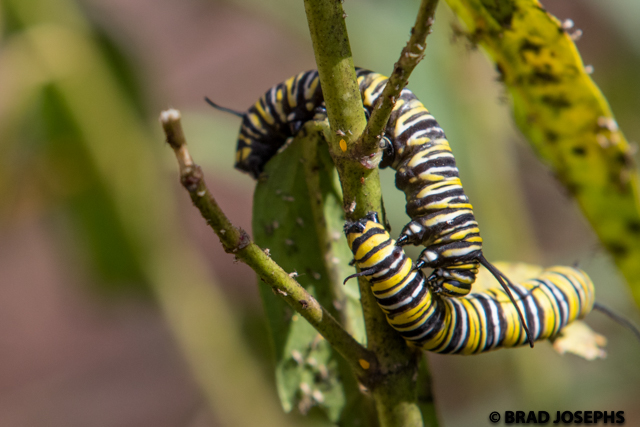
In late september 6 monarch caterpillars fed on milkweed that we planted. One cause of the drop in monarch numbers is the loss of milkweed which is necessary for these caterpillars to develop.
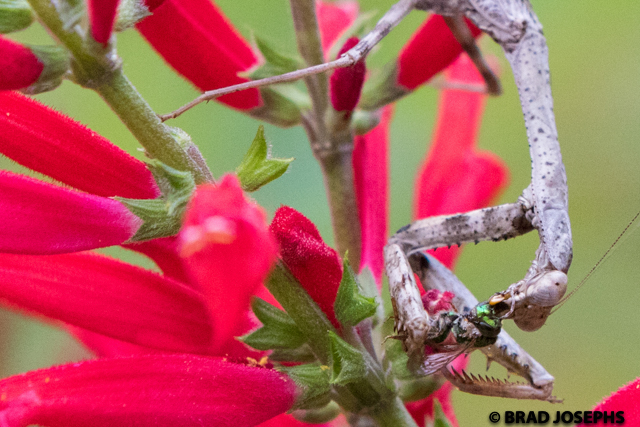
preying mantis eating a fly.
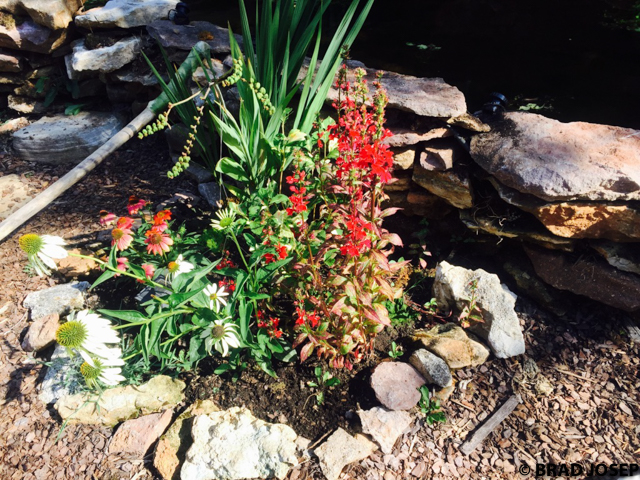
Cardinal flower is a rare native that attracts lots of pollinating insects and hummingbirds. Coneflower, or echinacea is another beautiful native that is a favorite for butterflies and bees.
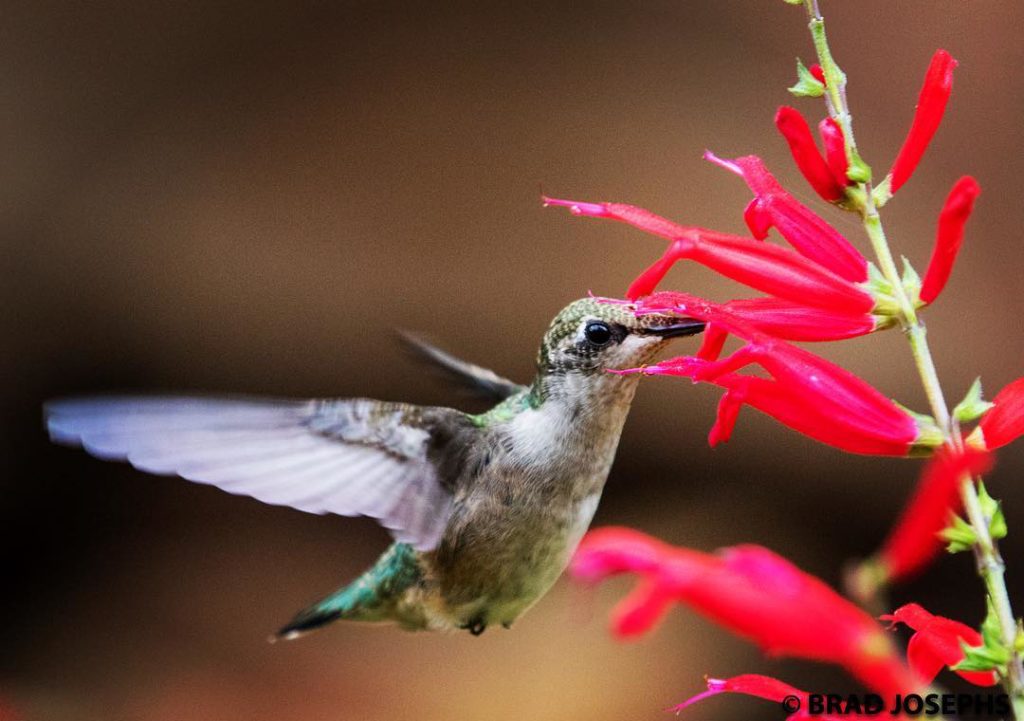
One of my goals when I am guiding expeditions for Natural Habitat is to instill a love, appreciation and understanding of our natural world in our travelers. I always communicate to them that their experience in an exotic land can be brought right home into their backyard. Even less than an acre of land can be optimized to attract wildlife, which helps conserve biodiversity, and can provide endless hours of enjoyment, observation and photography opportunities. Plant native plants, make your yard bird-friendly, build a frog pond… Be a good steward of your land!
Keep learning and exploring! and join your local frogwatch chapter!
Brad

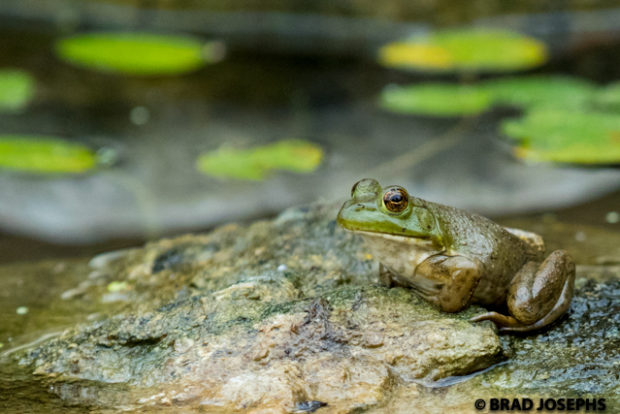

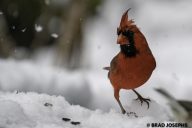
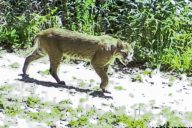
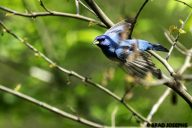
2 Comments
I love your pond .
Wise words, awesome pond and beautiful pics !